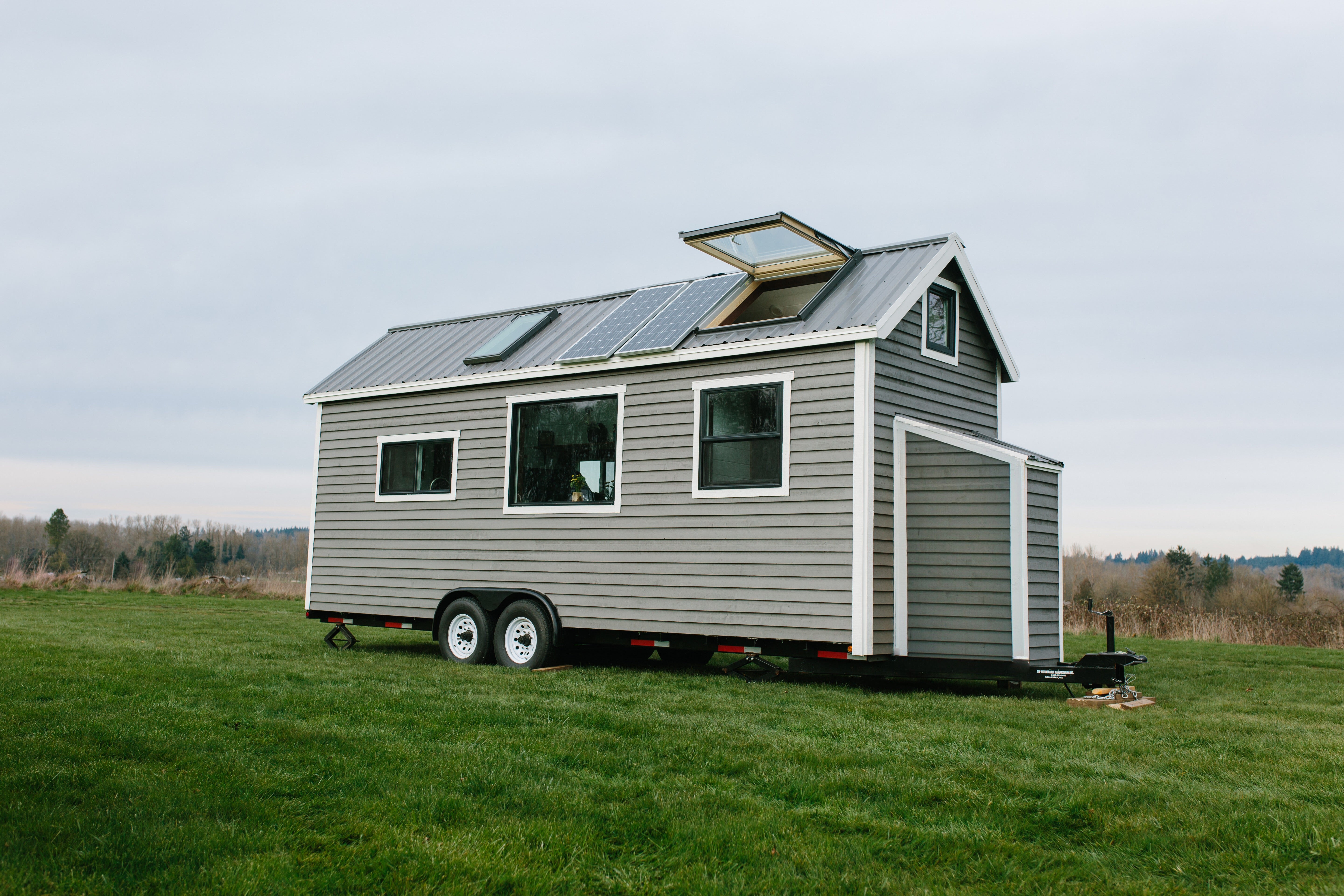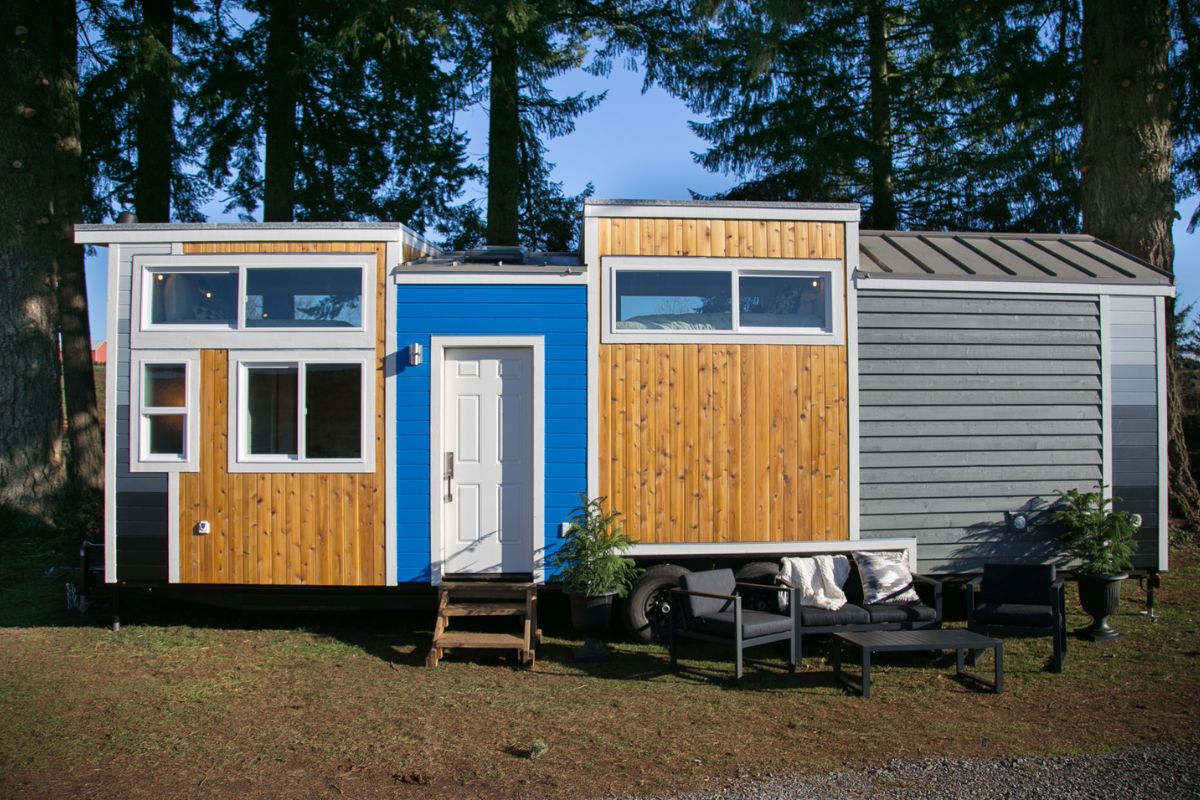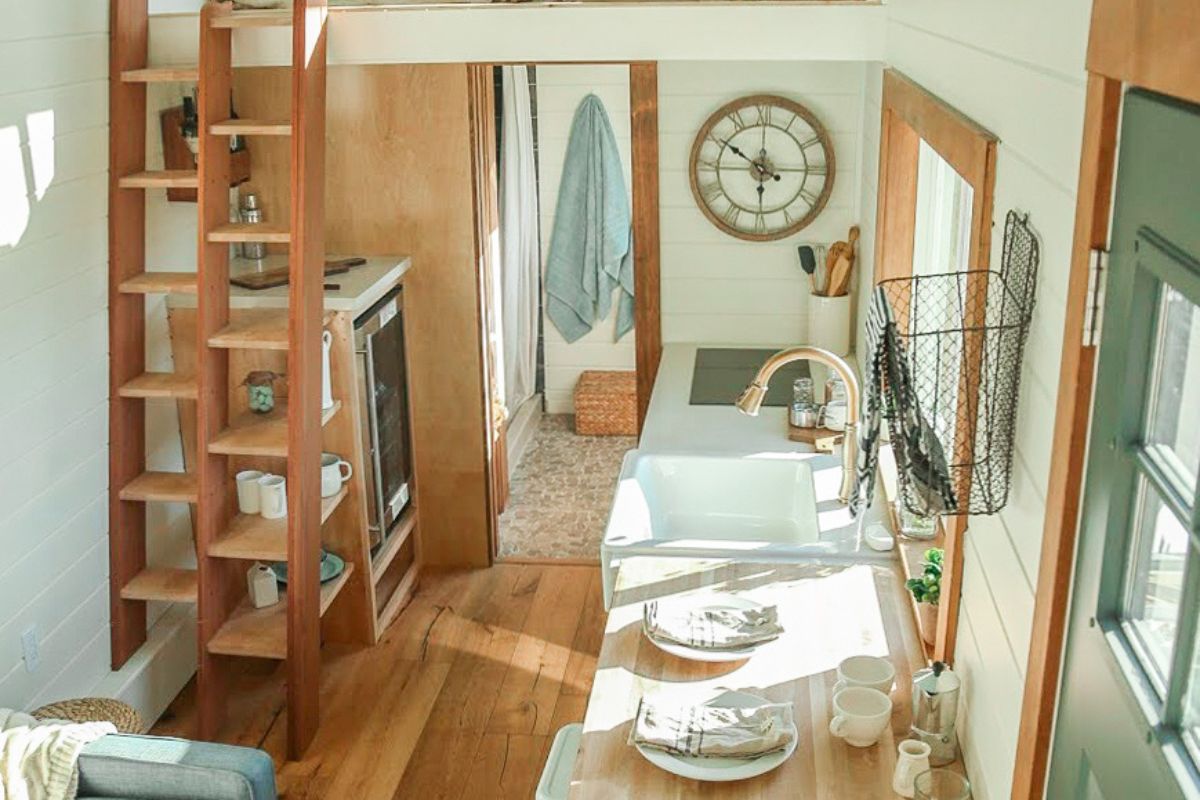To rent land for your tiny home, start by researching local zoning regulations to guarantee compliance with land use laws. Assess your needs and preferences for location, amenities, and size. Look for landowners willing to rent by exploring online listings or local networks.
Negotiate lease terms carefully, addressing utilities and maintenance. Be prepared to comply with local building codes. You’ll find that understanding these aspects will set you up for a successful tiny home experience.
Key Takeaways
-
Research local zoning regulations to ensure tiny homes are permitted in your desired area before seeking land for rent.
-
Identify your specific needs for land, including size, utility access, and proximity to amenities.
-
Utilize online platforms and local listings to find available rental land suited for tiny homes.
-
Negotiate lease terms clearly, addressing duration, rental price, and maintenance responsibilities to protect your interests.
-
Confirm access to essential utilities and services, such as water, electricity, and internet, prior to signing any agreements.
Understanding Zoning Regulations for Tiny Homes
When you’re considering renting land for your tiny home, understanding zoning regulations is vital, as these rules can greatly influence where you can legally place your dwelling.
Zoning laws dictate land use, and they can vary markedly from one area to another. You’ll want to check if tiny homes are classified as permanent residences or temporary structures, as this impacts what’s allowed. Additionally, some zones may have minimum square footage requirements or restrictions on utilities.
Research local ordinances and consult with officials to avoid potential legal issues down the road. Knowing these regulations not only helps you find suitable land but also guarantees your tiny home living experience is compliant and stress-free. Don’t overlook this vital step!

Assessing Your Needs and Preferences
How do you envision your ideal tiny home experience? Start by identifying your must-haves and deal-breakers. Consider factors like proximity to work, access to amenities, and the surrounding environment.
Do you crave nature and solitude, or prefer being near a vibrant community? Next, think about the layout and space you need. Will you require outdoor space for gardening or a pet? Assess your lifestyle preferences, including whether you want off-grid capabilities or city utilities. Establishing your needs helps you narrow down options and makes the search much easier.
By clearly defining what you want, you’ll be better equipped to find land that aligns perfectly with your tiny home dreams.
Researching Potential Locations
Where will you find the perfect spot for your tiny home? Start by considering areas that align with your lifestyle and values. Research local zoning laws, as these regulations vary widely and can dictate where you can legally place your tiny home.
Look into neighborhoods that offer amenities you desire, like parks, shops, or public transport. Utilize online platforms to explore land listings and gather insights about local communities. Join forums or social media groups related to tiny living; they can provide valuable recommendations and experiences.
Finally, don’t forget to evaluate the land’s accessibility, utilities, and natural surroundings. This thorough research will help you identify locations that not only meet your needs but also enhance your tiny living experience.
Finding Landowners Open to Renting
Finding landowners willing to rent their property for your tiny home can feel intimidating, but it’s entirely achievable with the right approach. Start by leveraging online platforms and social media groups dedicated to tiny living. These communities often have members who are open to renting land.
Next, consider reaching out to local farmers or landowners directly; many may not actively advertise but are open to negotiations. Networking at local events can also yield potential leads. Don’t underestimate the power of word-of-mouth; tell friends and family about your search. Be prepared to present your vision and explain how your tiny home aligns with their property. A friendly, professional demeanor can go a long way in building trust and rapport with potential landowners.
Negotiating Lease Terms and Agreements
Once you've identified a potential landowner, negotiating lease terms and agreements becomes essential to guarantee a mutually beneficial arrangement. Start by clearly outlining your needs, such as the lease duration and rental price. Be prepared to discuss responsibilities—who maintains the land or handles property taxes?
Don’t shy away from proposing terms that protect your interests, like a clause for early termination or renewal options. Each party should feel valued, so listen actively and be open to compromises. Document everything in a written agreement to avoid misunderstandings later on. Remember, a well-structured lease can foster a positive relationship with your landowner and provide stability for your tiny home living arrangement, ensuring you both enjoy the benefits of this partnership.
Ensuring Access to Utilities and Amenities
Access to utilities and amenities is essential when renting land for your tiny home, as it directly impacts your comfort and quality of life. Before signing a lease, check if the property has reliable water, electricity, and sewage systems. You’ll want to confirm the availability of high-speed internet too, especially if you work remotely.
If utilities aren’t included, ask about connection costs and ongoing fees. Additionally, consider proximity to essential amenities like grocery stores, healthcare, and public transport. These factors can greatly affect your lifestyle and convenience. A site with good access to utilities and nearby services enhances your tiny living experience. So, don’t overlook these critical elements when evaluating potential rental properties.
Preparing Your Tiny Home for the Site
Before you settle into your new land, preparing your tiny home for the site is essential to guarantee a smooth changeover and ideal living conditions. Start by evaluating the land’s terrain and layout. Make sure your tiny home’s foundation aligns with the ground to prevent structural issues.
Secure proper leveling to enhance stability and comfort. Next, check for adequate drainage to avoid water pooling around your home. Consider adding insulation, especially if you're in a colder climate, to maintain a comfortable temperature year-round. Finally, make certain you have a plan for securing your home against potential weather events. By taking these steps, you’ll create a safe, functional, and welcoming environment for your tiny living adventure.

Complying With Local Building Codes
Understanding and complying with local building codes is essential when renting land for your tiny home. Each municipality has specific regulations regarding zoning, structure size, and safety standards that you must follow. Failing to comply can lead to fines, eviction, or costly modifications.
Research your area's building codes thoroughly before signing a lease. This includes checking for permits, utility connections, and any restrictions on mobile structures. Engage with local authorities or seek advice from professionals familiar with tiny home regulations. By ensuring you meet these requirements, you not only protect your investment but also foster positive relationships with landlords and neighbors. Adhering to building codes enhances safety and helps you enjoy your tiny home experience without unnecessary complications.
Tips for a Successful Land Rental Experience
While steering through the process of renting land for your tiny home, it’s crucial to establish clear communication with your landlord from the outset. Discuss expectations regarding utilities, maintenance, and any restrictions on your property usage.
Always read the rental agreement thoroughly. Look for hidden fees or clauses that could impact your stay. Don’t hesitate to negotiate terms that suit both parties.
Building a good relationship with your landlord can lead to a more flexible rental experience. Keep them updated on any issues and show appreciation for their support.
Finally, be respectful of the land and surrounding community. This fosters goodwill and might even open doors for future rental opportunities. A positive experience can benefit you and your landlord alike.
Conclusion
Renting land for your tiny home can be a rewarding journey if you approach it thoughtfully. By understanding zoning regulations, evaluating your needs, and negotiating fair lease terms, you can secure a space that fits your lifestyle. Don't forget to guarantee access to utilities and comply with local building codes.
With careful planning and research, you can create a harmonious living environment that reflects your values and aspirations. Embrace this opportunity to simplify your life and enjoy your tiny home experience!






Share: